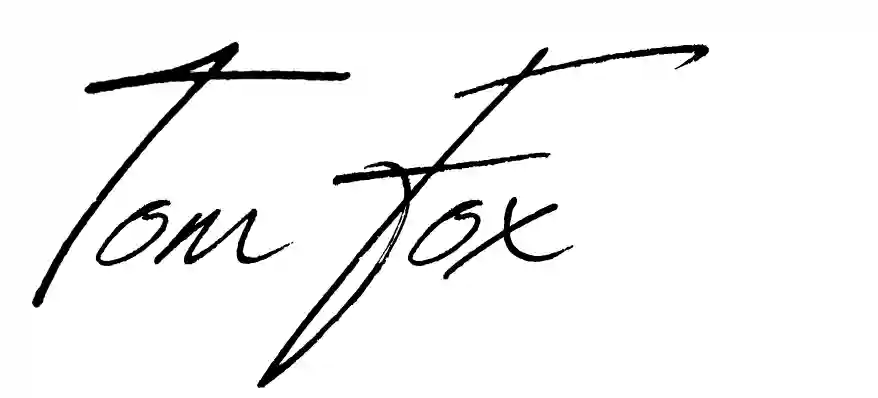Decoding the Silent Signals: Why Customers Hide Their Intentions (and How to Uncover Them)
Alright, you time-conscious closers, let’s talk about qualifying leads.
Now, before you start picturing me with a giant checklist and a stern expression, interrogating every prospect who dares to cross my path (though, hey, a little interrogation never hurts), let me clarify – this isn’t about being rude or dismissive.
It’s about respecting your time, prioritizing your efforts, and focusing on the prospects who are most likely to convert into paying customers.
In the fast-paced world of sales, time is your most precious commodity.
Every minute spent chasing a dead-end lead is a minute lost that could be spent nurturing genuine prospects.
Done with the endless sales theory and ready to actually close more deals? If you want to skip the ‘WHY’ and get straight to the ‘HOW’?
Make “Coffee with a Closer” your next move. Get weekly, battle-tested action steps delivered directly to your inbox – no fluff, just results.
Don’t Be That Guy (or Gal)
Don’t be the salesperson who spends hours chatting with a prospect, building rapport, and crafting the perfect pitch, only to find out at the end that they have no budget, no decision-making authority, and no real interest in your product or service.
So, how do you efficiently separate the wheat from the chaff?
The answer lies in masterful lead qualification.
But here’s the rub: prospects don’t always wear their intentions on their sleeves.
They often hold back, leaving salespeople to navigate a murky landscape of unspoken needs and hidden agendas.
Understanding why this happens is crucial for effective qualification.
The Shadowy World of Unspoken Intentions: Why the Silence?
Why are customers so often cagey about their true intentions?
It’s rarely about malice or a desire to mislead.
Instead, a complex web of psychological and situational factors comes into play:
Fear of Commitment:
Expressing a clear intention can feel like a premature commitment, something many prospects are hesitant to make, especially in the early stages of the sales process.
They might still be exploring options, comparing vendors, or unsure about budget.
Declaring their intentions too early feels like closing doors before they’re ready.
Information Gathering:
Some prospects are simply in information-gathering mode.
They may be genuinely interested but not yet ready to buy.
Openly stating their intention might feel like an unnecessary disclosure of vulnerability.
They want to maintain control of the information flow.
Negotiating Power:
Revealing their true intention can feel like giving up a bargaining chip.
Prospects may believe that by keeping their cards close to their chest, they’ll have more leverage in future negotiations.
They see it as a strategic game.
Lack of Clarity:
Sometimes, prospects themselves aren’t entirely clear about their own needs or priorities.
They might be exploring different solutions, unsure of the best fit.
In such cases, articulating a clear intention is difficult because it simply doesn’t exist yet.
Privacy Concerns:
Especially in B2B sales, revealing too much about their business challenges or future plans can feel like a breach of confidentiality.
They’re concerned about competitive advantage and data security.
Social Dynamics:
Sometimes, it’s just about navigating social interactions.
Some people are naturally more reserved and less forthcoming.
They might feel uncomfortable revealing too much personal or business information to a salesperson they’ve just met.
The Power of Qualification: Shining a Light in the Shadows
This is where effective qualification becomes essential.
It’s not about interrogation or high-pressure tactics.
It’s about skillfully guiding the conversation, asking the right questions, and creating a safe space for prospects to reveal their needs and motivations, even if they’re hesitant to explicitly state their intentions upfront.
Moving Beyond the “What”: The Importance of “Why”
The power of “why” is paramount.
Don’t just accept surface-level answers.
Dig deeper.
When a prospect expresses interest, don’t just celebrate the lead – ask why they’re interested.
What specific problem are they trying to solve?
What are their desired outcomes?
The answers to these “why” questions will provide far more valuable insights than a simple “yes, I’m interested.”
Early and Often: The Qualification Cadence
Don’t wait until the end of the sales cycle to start qualifying.
Integrate qualifying questions into your initial interactions.
This allows you to quickly identify potential roadblocks and avoid investing time in leads that are unlikely to convert.
It also demonstrates your expertise and positions you as a trusted advisor, not just a salesperson.
“Stop wasting time on tire-kickers! Master the art of lead qualification and focus your energy on closing deals.”
Tom Fox
Qualifying Questions: Your Secret Weapon
The key to effective qualification is asking the right questions.
And those questions often aren’t the easy, feel-good ones.
They’re the tough, sometimes uncomfortable questions that get to the heart of your prospect’s needs and motivations.
Here are a few examples:
- “What are your biggest challenges right now?”
- “What are your goals for the next year?”
- “What’s your budget for this type of solution?”
- “Who else is involved in the decision-making process?”
- “What’s your timeline for making a decision?”
Beyond Questions: Active Listening and Observation
Qualification isn’t just about asking questions; it’s also about active listening and careful observation.
Pay attention to what your prospects don’t say, as well as what they do.
Look for subtle cues, body language, and unspoken concerns.
These nonverbal signals can be just as revealing as explicit statements.
The Payoff: Time Saved, Deals Closed
Mastering the art of lead qualification, including understanding the reasons behind hidden intentions, offers significant benefits:
- Time Optimization: Focus your energy on high-potential leads, maximizing your efficiency and ROI.
- Increased Close Rates: By targeting qualified prospects, you significantly improve your chances of closing deals.
- Stronger Customer Relationships: Effective qualification builds trust and rapport, leading to more meaningful customer relationships.
- Improved Sales Performance: Ultimately, better qualification translates to better sales performance.
Embrace the challenge of decoding unspoken intentions.
Embrace the challenge of decoding unspoken intentions. Sign up for the “Coffee with a Closer” receive expert guidance on how to uncover hidden needs and motivations, leading to higher conversion rates.
By understanding the “why” behind customer reticence and employing skillful qualification techniques, you can transform your sales process, save valuable time, and close more deals.
So, ditch the “nice guy” approach and become a master qualifier. Your time is valuable, and you deserve to spend it on prospects who are ready to buy.

PS: Want the most powerful persuasion hacks delivered straight to your inbox? Sign up for the “Coffee with a Closer” today!


